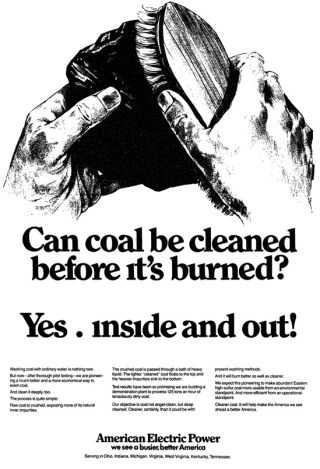Among the highlights of President Obama’s climate change speech was an explicit recognition that polluting industries and the members of Congress who do their bidding will oppose climate action with the same talking points they have used for decades to try and block clean air standards.
Now, what you will hear from the special interests and their allies in Congress is that this will kill jobs and crush the economy and basically end free enterprise as we know it. And the reason I know you’ll hear those things is because that’s what they’ve said every time America sets clear rules and better standards for our air and our water and our children’s health. And every time, they’ve been wrong.
For example, in 1970, when we decided, through the Clean Air Act, to do something about the smog that was choking our cities — and by the way, most young people here aren’t old enough to remember what it was like, but you know, when I was going to school in 1979, 1980 in Los Angeles, there were days where folks couldn’t go outside. And the sunsets were spectacular — (laughter) — because — because of all the pollution in the air. But at the time when we passed the Clean Air Act to try to get rid of some of this smog, some of the same doomsayers were saying, new pollution standards will decimate the auto industry. Guess what? Didn’t happen. Our air got cleaner.
In 1990, when we decided to do something about acid rain, they said our electricity bills would go up; the lights would go off; businesses around the country would suffer, I quote, “a quiet death.”
None of it happened, except we cut acid rain dramatically. The problem with all these tired excuses for inaction is that it suggests a fundamental lack of faith in American business and American ingenuity.
These dishonest industry attacks on clean air rules over the decades have taken many forms, from lobbying to public relations efforts. But a primary tactic for these efforts has been, and remains, well funded advertising campaigns. A collection of some of these ads highlights the pattern of scare tactics used by the coal industry to try and limit regulation since the 1970s.
In reality, these industry attack ads are more about spooking politicians in Washington DC than actually convincing voters – that’s why they show up so frequently in newspapers read on Capitol Hill, and at Metro stations and billboards in DC. In fact, the coal industry itself recognizes that its advertising efforts during the 2012 election failed to sway voters, as the National Mining Association’s Luke Popovich admitted:
Anyway, ‘war on coal’ never resonated with much conviction among ordinary Americans. For them, the EPA keeps the air and water clean, their kids safe.
It’s not surprising that Americans aren’t buying the coal industry’s PR – after all, polls show that most Americans don’t want more coal power, while huge majorities favor increased development of clean energy like wind and solar. To try and get around this, the coal industry runs much of its PR efforts through front groups with misleading names. For example, the claim that Obama mentioned, that businesses would suffer “a quiet death,” came from an industry group formed to fight the 1990 Clean Air Act amendments called the “Clean Air Working Group.” Today, the “American Coalition of Clean Coal Electricity” (ACCCE) leads the coal industry’s advertising efforts, while the “Electric Reliability Coordinating Council” lobbies against clean air rules on behalf of Arch Coal and a few coal heavy utilities. In the Pacific Northwest, where the coal industry hopes to build export terminals to ship taxpayer owned coal to Asia, the coal industry uses Edelman, the world’s largest PR firm, to push its agenda under a front group called the “Alliance for Northwest Jobs and Exports.” And again, despite the millions they’ve spent on ads, opposition to coal export proposals is growing.
The coal industry remains entrenched in the halls of Congress and K street lobby firms, and we can expect more of the same old tactics from this desperate industry as carbon pollution limits move forward, and communities continue to organize against coal plants and export proposals. And while their ads might be a little more sophisticated than in the past, it’s increasingly clear that its PR efforts still aren’t swaying many people outside Washington DC.

This ad from American Electric Power ran in the Wall Street Journal in 1979. Check out more examples of misleading coal ads at http://quitcoal.org/coalads


